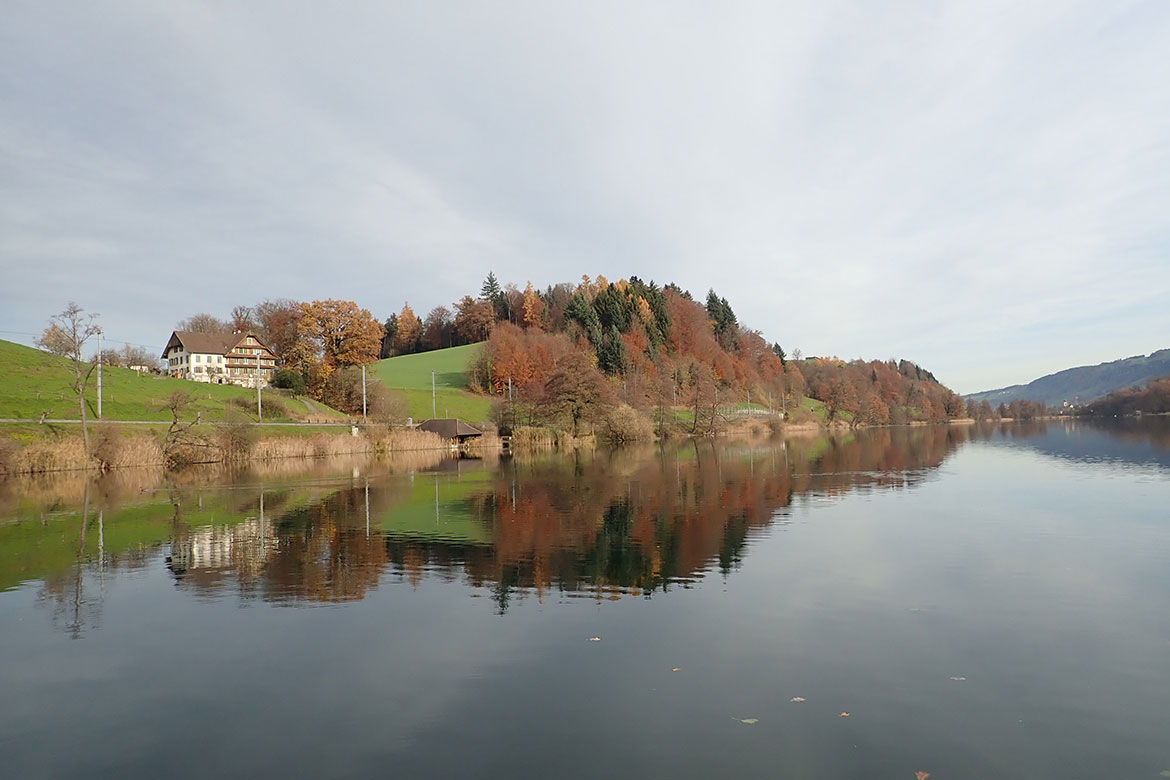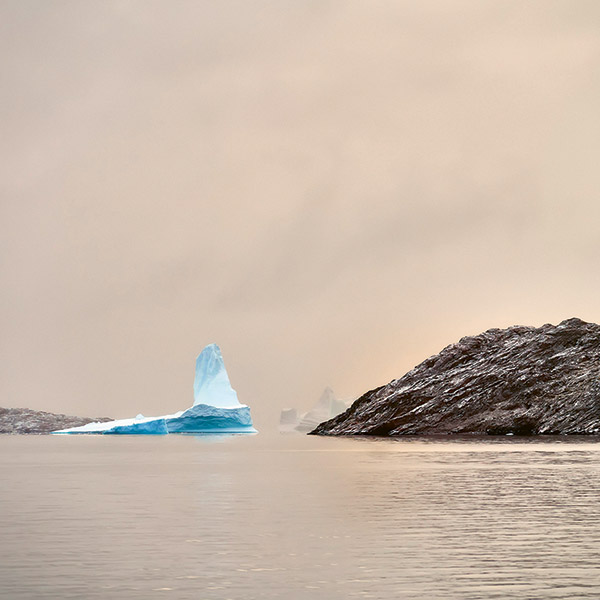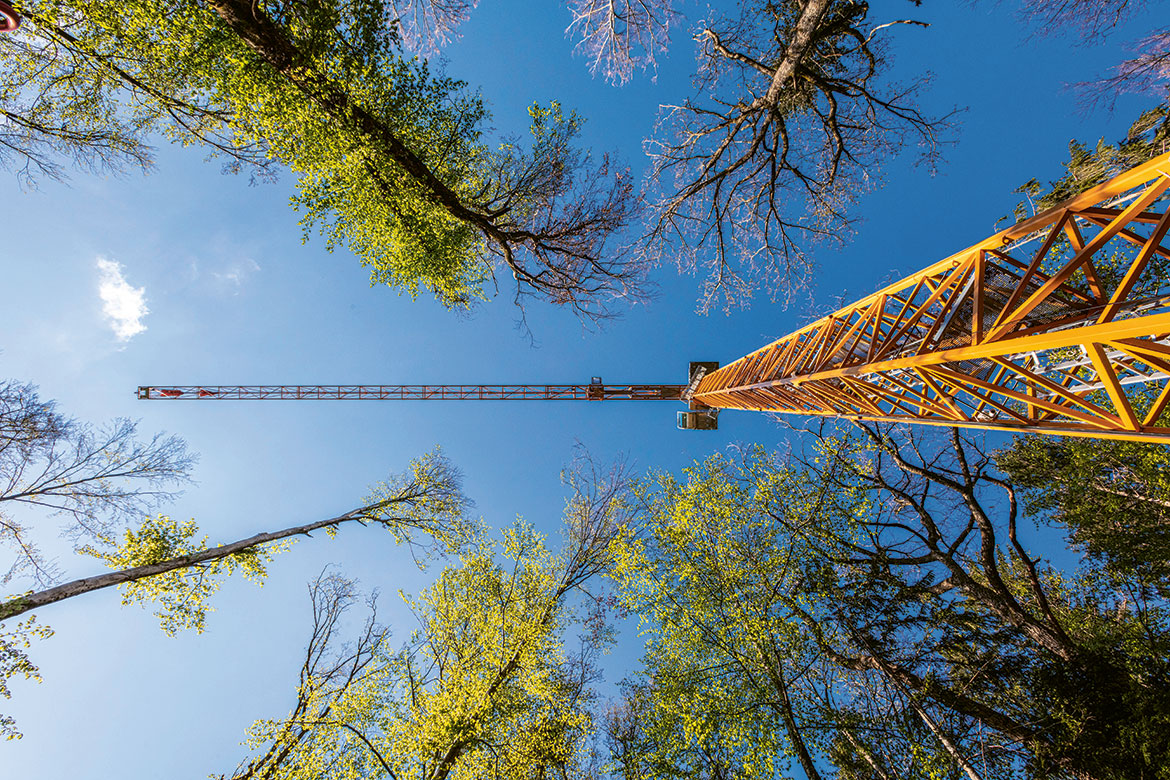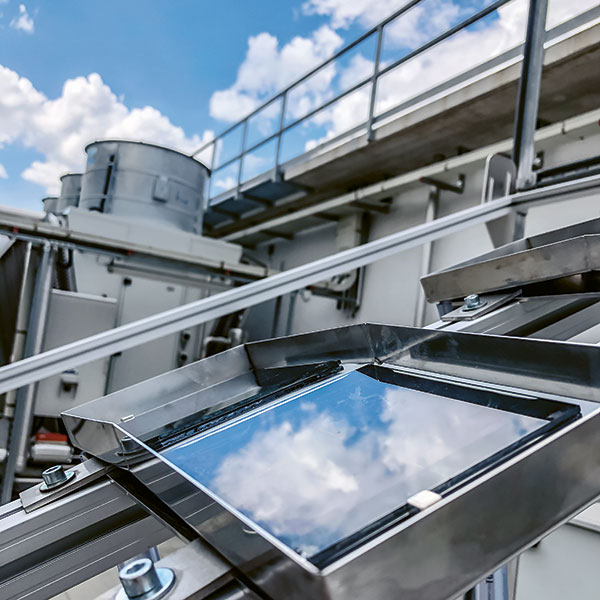GREENHOUSE GASES
Storms release methane from lakes
Bacteria destroy the methane that rises from lakes in the winter. This is why the latter do not release as many greenhouse gases as originally feared.

This idyllic scene at the Rotsee outside Lucerne is not all that’s ruined when a storm comes. During a storm, bacteria cease being able to metabolise methane before it enters the atmosphere and damages the climate. | Photo: Karin Beck
The sediment layers of standing waters are home to microorganisms that produce methane, which is considered a potent greenhouse gas. Until now, it was assumed that this methane moves to the surface of the water in autumn and winter and then enters the atmosphere. But teams from the Swiss Federal Institute of Aquatic Science and Technology (Eawag) and ETH Zurich have been carrying out measurements that now contradict this hypothesis.
In summer, the different water strata in lakes are stable. Living in the upper layers are so-called methanotrophic bacteria that metabolise methane as their source of carbon, extracting energy from it. This means that they prevent the gas from entering the atmosphere. But the cooler temperatures that come towards the end of the year churn the different water layers, which is why it used to be assumed that the methane that emerges lower down would now rise up and escape into the atmosphere. “This is not the case”, says Helmut Bürgmann of Eawag. “Although the low layers of methane-rich water do reach the surface, the methanotrophic bacteria are able to multiply so amply under these conditions that they destroy over 90 percent of the methane. You have to take this into account when you’re modelling the impact of methane on climate warming”.
These findings are based on measurements taken between October and December 2016 in the 16-metre-deep Rotsee, a lake near Lucerne. The water layer at the bottom of the lake is low in oxygen but rich in methane, and it shrank from eight metres thick to less than four metres during these months. As a previous study also showed, this period also saw a proliferation and broader distribution of the methanotrophic bacteria in the upper oxygen-rich water layers, into which the methane had been mixed.
The researchers used this data to model the fate of the methane under different conditions. “Only when the water is suddenly subjected to very strong swirling effects – such as by a storm – does more of the methane enter the atmosphere. Otherwise, the gas is metabolised”, says Bürgmann. However, this does not take into account the gas bubbles that rise to the surface, as they cannot be extracted by the bacteria.




